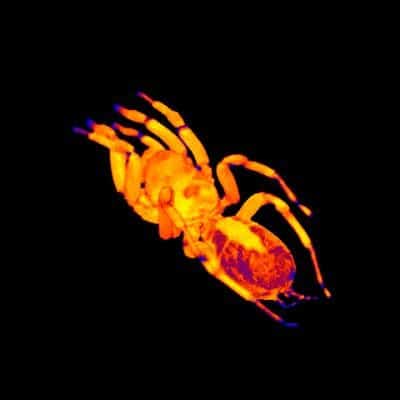
Scientists can color the MRI images to highlight organs. The heart is shown in lighter colors in the posterior part of the body. (c) Gavin Merrifield
Biologists from Edinburgh University might have stumbled across a significant discovery, after strapping a tarantula to a magnetic resonance imaging scanner, which showed how its heart contracted in a unique double beat. The find might apply to a species of spiders.
If your curious to see the strange double heart beat for yourself, scientists have a video up on the university’s website.
“In the videos you can see the blood flowing through the heart and tantalizingly it looks as though there might be ‘double beating’ occurring; a distinct type of contraction which has never been considered before,” said Gavin Merrifield in a press release.
Previous spider cardiac research were either indirect or highly invasive, however the Scottish biologists came to more accurate results by measuring heart rate and cardiac output with an MRI scanner. Merrifield presented the research at the Society for Experimental Biology Annual Conference in Glasgow last month.
Although MRI use is often medical in reason, it’s been known to have implications in study advancements of other branches of biology.
“One potential practical use of this research is to ascertain the chemical composition of spider venom,” says Mr. Merrifield. “Venom has applications in agriculture as a potential natural pesticide. On the more academic side of things if we can link MRI brain scans with a spider’s behaviour, and combine this with similar data from vertebrates, we may clarify how intelligence evolved.”









